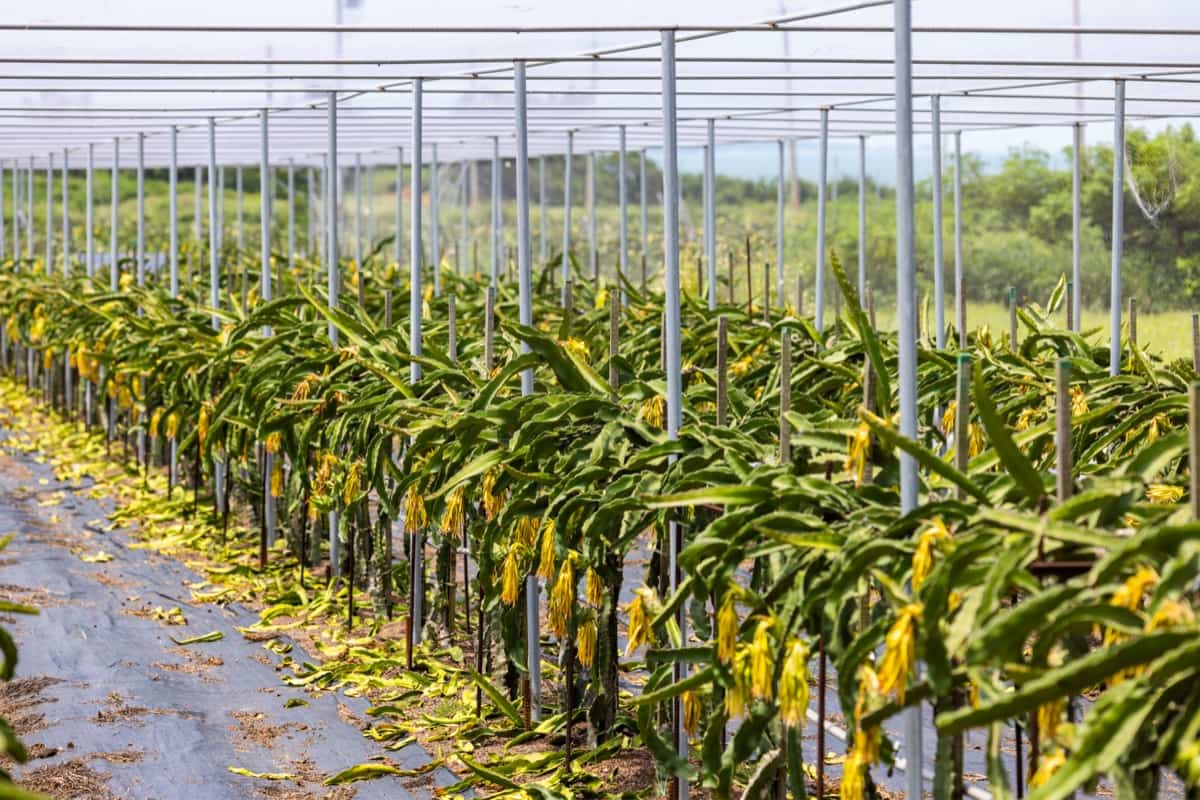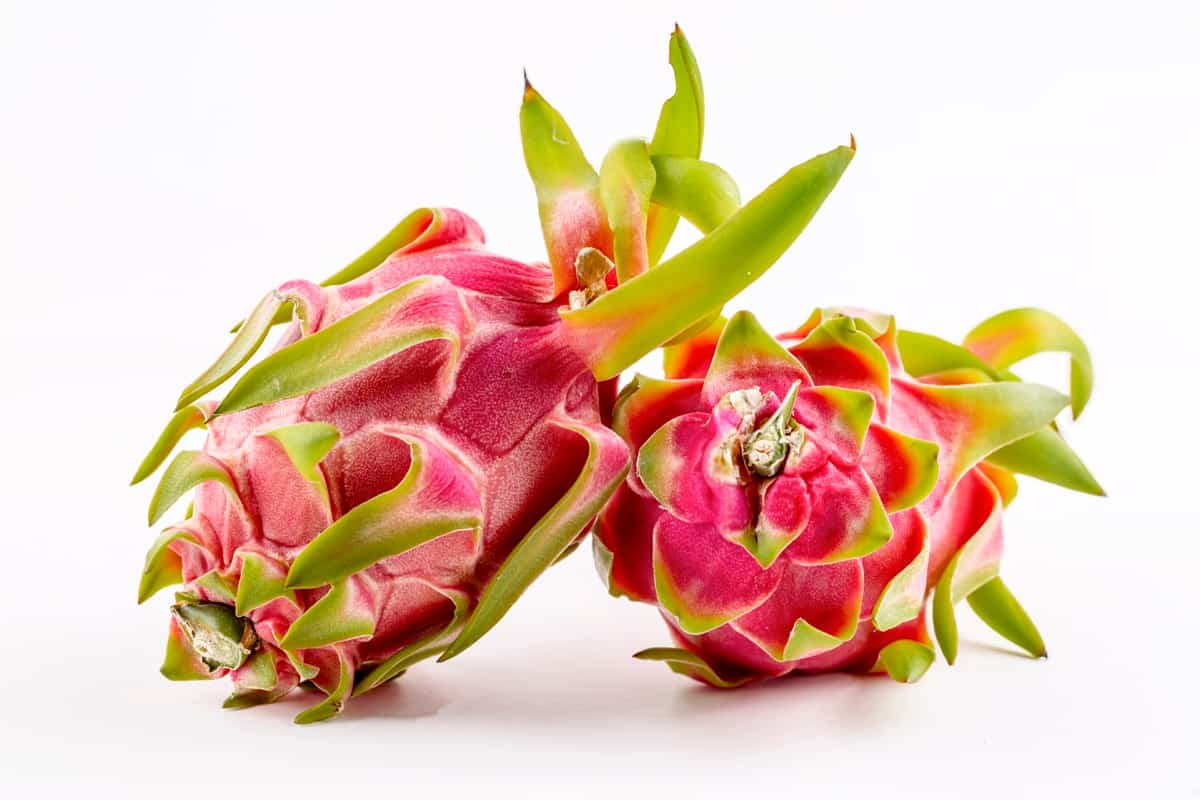Grow dragon fruits organically begins with selecting a well-drained, sunny location. Plant dragon fruit cuttings in a cactus-friendly soil mix enriched with compost. Use trellises or stakes for support, as these plants are climbers. Water sparingly and the soil should be allowed to dry out between watering, as dragon fruit is drought-resistant.

Fertilize with organic, low-nitrogen options every 6-8 weeks. Prune to encourage branching and airflow. Protect from frost and pests. Harvest ripe fruits when their skin color changes, usually after 30-45 days of flowering. Organic dragon fruit cultivation requires patience, care, and vigilance to ensure a successful harvest.
How to Grow Dragon Fruits Organically
Choosing the Right Dragon Fruit Variety to Grow Dragon Fruits Organically: Factors to Consider
When selecting a dragon fruit variety for organic cultivation, consider several key factors. First, assess your local climate; some varieties are better suited to hot or cool regions. Opt for self-pollinating varieties to ensure fruit production. Disease resistance is essential in organic farming; research varieties with a robust track record.
Taste preferences and market demand also influence the choice. Selecting a variety that matches your specific growing conditions, whether in-ground or containers, is crucial. Lastly, consider the aesthetic appeal, as different varieties offer unique fruit colors and shapes. A well-informed choice will contribute to successful organic dragon fruit cultivation.
Preparing the Ideal Soil Conditions to Grow Dragon Fruits Organically and Healthy Fruit Growth: Step-by-Step Instructions
- Choose a well-drained, sandy loam soil with a pH between 5.5 and 7.0.
- Before planting, amend the soil by adding organic matter like vermicompost or well-aged manure to improve fertility and moisture retention.
- Conduct a soil test to know nutrient levels and adjust as needed. Organic fertilizers can be used to maintain a balanced nutrient profile.
- Ensure proper drainage by planting dragon fruit in raised beds or mounds to prevent waterlogging.
Planting Cuttings to Grow Dragon Fruit Organically: Best Practices and Techniques
- Select healthy, disease-free cuttings from a mature dragon fruit plant.
- Allow cuttings to air dry for a few days to prevent rot.
- Dig a hole or trench in well-prepared, organic soil, ensuring proper drainage.
- Insert the cuttings vertically or at a slight angle, leaving 2-4 nodes above the soil.
- Provide initial support using a stake or trellis.
- Water thoroughly, then reduce watering until roots establish (usually in 2-4 weeks).
- Apply organic mulch to conserve moisture and suppress weeds.
- Protect young plants from harsh sun and wind.
In case you missed it: Harvesting and Post-Harvest Handling of Dragon Fruits: Marketing Strategies

Providing Optimal Watering and Irrigation for Organic Dragon Fruit Plants: Dos and Don’ts
Do’s
- Water young plants regularly to establish roots.
- Use a drip or soaker hose system to provide consistent, deep watering.
- Water deeply but infrequently to prevent overwatering and root rot.
- Apply organic mulch to retain soil moisture.
- Monitor soil moisture using a moisture meter or hand-feel method.
- Water in the early morning to reduce disease risk.
Don’ts
- Avoid frequent shallow watering, as it encourages shallow root growth.
- Don’t let the soil become waterlogged or soggy.
- Refrain from overhead watering, which can promote disease.
- Don’t water during the hottest part of the day to minimize water loss through evaporation.
Nurturing Dragon Fruit Plants Organically: Essential Care and Maintenance Tips
- Regularly trim to promote airflow and reduce disease risk.
- Apply organic, low-nitrogen fertilizers every 6-8 weeks during the growing season.
- Inspect for pests and use organic methods like neem oil or ladybugs for control.
- Install trellises or stakes to support climbing vines.
- Apply organic mulch to conserve moisture and deter weeds.
- Maintain consistent moisture levels, avoiding overwatering.
- Shield from frost with blankets or heaters.
- Keep plants dry and well-ventilated to prevent fungal diseases.
Natural Pest and Disease Control Methods for Grow Dragon Fruits Organically
- Use neem oil to deter insects and control fungal diseases.
- Introduce ladybugs to your garden to consume aphids and other pests.
- These microscopic organisms can help control soil-borne pests like nematodes.
- Grow pest-repelling plants like marigolds and basil alongside dragon fruit.
- Regularly prune to improve air circulation and reduce the risk of fungal diseases.
- Clean the garden, removing dead or infected plant material promptly.
- Consider organic sprays like garlic or chili pepper solutions for pest control.
Promoting Pollination in Dragon Fruit Plants Naturally: Attracting Beneficial Insects
While dragon fruit plants are primarily self-pollinating, they can also benefit from cross-pollination, which may lead to improved fruit quality and yield. Cross-pollination can occur when insects, particularly night-flying moths, visit multiple dragon fruit plants, transferring pollen between them. This can introduce genetic diversity and enhance fruit set.
For dragon fruit growers who want to increase fruit production or improve fruit quality, hand pollination is an option. Hand pollination involves transferring pollen from one flower to another. Gently collect pollen from the anthers of one flower using a small brush or else cotton swab. Carefully transfer the collected pollen to the stigma of another flower.
In case you missed it: Comparative Analysis of Different Growing Systems for Dragon Fruits

Organic Fertilization Techniques for Enhanced Dragon Fruit Growth and Yield
- Compost: Apply well-rotted compost to enrich soil with essential nutrients.
- Vermicompost: Utilize nutrient-rich vermicompost for slow-release organic fertilization.
- Organic Matter Mulching: Use straw or organic mulch to improve soil fertility and moisture retention.
- Fish Emulsion: Apply diluted fish emulsion for a balanced source of nutrients.
- Seaweed Extract: Utilize seaweed-based fertilizers for micronutrient boost and enhanced plant resilience.
- Banana Peels: Bury or chop banana peels around plants for potassium, a crucial nutrient for flowering and fruiting.
- Epsom Salt: Provide magnesium sulfate occasionally for improved overall plant health.
Harvesting and Storing Dragon Fruits Organically: Maximizing Flavor and Shelf Life
- Pick fruits when they’re fully ripe, usually when their skin color changes, and they give slightly when gently squeezed.
- Cut the fruit stem a few inches above the fruit to minimize damage.
- Avoid bruising or damaging the fruit during harvest.
- Let harvested fruits air dry to prevent moisture accumulation.
- Keep dragon fruits in a well-ventilated area away from direct sunlight to extend shelf life.
How Do You Make Organic Dragon Fruit Fertilizer?
To make organic dragon fruit fertilizer, combine well-rotted compost or composted manure with crushed eggshells, bone meal, and seaweed meal in a 3:1:1:1 ratio. Mix the ingredients thoroughly and incorporate them into the soil around the dragon fruit plant. This mixture provides essential nutrients and enhances soil fertility for organic dragon fruit cultivation.
In case you missed it: Companion Planting with Dragon Fruits: Beneficial Plant Species

Conclusion
In conclusion, cultivating dragon fruits organically demands a commitment to sustainable practices that promote plant health, maximize yield, and ensure delicious fruit. Each step plays a crucial role in successful organic dragon fruit cultivation. By adopting these practices, growers can enjoy a bountiful harvest and the satisfaction of promoting eco-friendly, chemical-free agriculture and delivering delicious, healthy dragon fruits to consumers.
- Feed Your Flock for Less: Top 10 Tips to Save on Chicken Feed
- Ultimate Guide to Ossabaw Island Hog: Breeding, Raising, Diet, and Care
- Hatching Answers: The Top 10 Reasons Your Chickens Aren’t Laying Eggs
- Eggs and Economics: Breaking Down the Cost of Raising Backyard Chickens
- Defend Your Greens: Proven Methods to Keep Iguanas Out of Your Garden
- Ultimate Guide to Cinnamon Queen Chicken: A Comprehensive Guide for Beginners
- Ultimate Guide to California Tan Chicken: Breeding, Raising, Diet, Egg-Production and Care
- Ultimate Guide to Marsh Daisy Chicken: Breeding, Raising, Diet, and Care
- 10 Types of Chicken Farming Businesses You Can Start for Profits